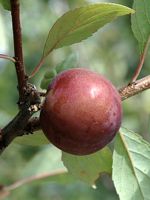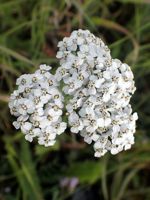Mon-Fri 9am - 5pm Mountain time
Opata Cherry Plum vs Yarrow
Prunus besseyi x salicina Opata
Achillea borealis (Previously Achillea millefolium)
NOT AVAILABLE THIS SEASON
(new stock expected: fall of 2026)
NOT AVAILABLE THIS SEASON
(new stock expected: fall of 2026)
Opata Cherry Plum is considered to be one of the best tasting Cherry Plum varieties. It has a pleasant, sweet flavour and a hint of acidity. They ripen in mid to late August and are well suited to fresh eating, baking, and preserves.
The fruit is closer to a plum than a cherry but is smaller than most plums.The Opata Cherry Plum’s skin is red/green whereas the flesh is yellow-green. The flesh is freestone with a juicy, firm texture. Similar to other stone fruits, it does not store for very long.
The Opata Cherry Plum is a hybrid between a Western Sand Cherry and a Japanese (Chinese) Plum. For fruit production, it needs to be planted with another variety for cross-pollination. Canada Plum and American Plum are considered universal pollinizers.
Yarrow is a herbaceous, native wildflower that is found across Canada. It features large, flat clusters of tiny white flowers. The blooms attract a variety of pollinators, making it an ideal choice for pollinator gardens. While partial shade is tolerated, the best flowering occurs in full sun. Yarrow is resistant to deer and rabbits, making it both a beautiful and practical addition to your landscape.
The entire plant is edible, but leaves and flowers are most commonly consumed. They have a strong licorice scent and a mild sweet flavor that is similar to tarragon. Yarrow leaves can also be used as a natural insect repellent.
It is important to plant Yarrow in the right place, it can spread quickly via both rhizomes and self-seeding. Deadheading the spent flowers will extend the bloom season and can help limit self-seeding.
Opata Cherry Plum Quick Facts
Yarrow Quick Facts
Toxicity: toxic to dogs, cats, and horses

